 W
WAfter Burner is an arcade vehicular combat game developed and released by Sega in 1987. The player assumes control of an American F-14 Tomcat fighter jet, and must clear each of the game's eighteen unique stages by destroying incoming enemies, using both a machine gun and a limited supply of heat-seeking missiles. It uses a third-person perspective, previously utilized by Sega's earlier games Space Harrier (1985) and Out Run (1986), and runs on the Sega X Board arcade system, which is capable of surface and sprite rotation. It is the fourth Sega game to use a hydraulic "taikan" motion simulator arcade cabinet, one that is more elaborate than their earlier "taikan" simulator games. The cabinet simulates an aircraft cockpit, with flight stick controls, a chair with seatbelt, and hydraulic motion technology that moves, tilts, rolls and rotates the cockpit in sync with the on-screen action.
 W
WAfter Burner II is an arcade combat flight simulator game released by Sega in 1987. It is the second game in the After Burner series, and was released for the Sega X Board arcade system. In the game, players fly an F-14 Tomcat jet fighter, gunning down enemies while avoiding incoming fire. After Burner II came both a standard arcade cabinet and a servo actuated, sit-down motion simulator version which moved according to the motion of the plane onscreen. The cockpit would bank in the same direction the on-screen aircraft was banking. It is an updated version of After Burner, with the addition of throttle controls. It was a commercial success, becoming Japan's highest-grossing arcade game of 1988.
 W
WAfter Burner III is a video game released for the FM-Towns home computer in Japan and later ported to the Sega CD in Japan, Europe and North America. It is the third game in the After Burner series, and a port of Strike Fighter, a game released for Japanese arcades, itself a sequel to G-LOC: Air Battle.
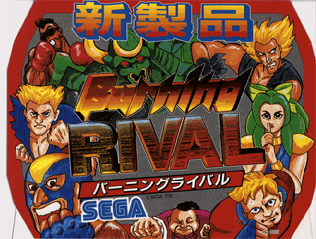 W
WBurning Rival (バーニングライバル) is a 1993 fighting arcade game developed by Sega AM2 and published by Sega. It was released exclusively in Japan in July 1993. It was also the first fighting game developed by Sega AM2. Virtua Fighter and Shenmue creator Yu Suzuki was involved as a producer. It is noted for its distinct 2D graphics and animations, developed by Zero-One. It was created during the fighting game trend of the 1990s that was popularized by Capcom's Street Fighter II.
 W
WChampion Boxing is a 1984 boxing sports video game developed and published by Sega for the Sega SG-1000, and later ported to the arcades, only in Japan and Europe. It was Sega-AM2 founder and leader Yu Suzuki's debut creation, as well as that of Rieko Kodama. In 1985, a successor of Champion Boxing titled Champion Pro Wrestling was released in the arcades, and ported to the SG-1000 and the MSX home computer the same year. However, this is a professional wrestling game instead of a boxing game.
 W
WDaytona USA is an arcade racing video game developed by Sega AM2 in 1993 and released by Sega in 1994. Players race stock cars on one of three courses. The first game released on the Sega Model 2 three-dimensional arcade system board, a prototype debuted at Tokyo's Amusement Machine Show in August 1993 and was location tested in Japan the same month, before the complete game released in March 1994. Daytona USA is one of the highest-grossing arcade games of all time.
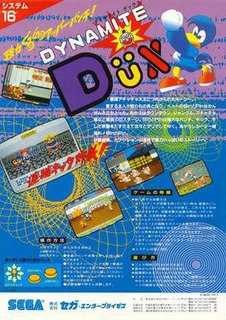 W
WDynamite Düx is a beat 'em up video game developed by Sega AM2 and released by Sega for arcades in 1988. Produced by Yu Suzuki and with music composed by Hiroshi Kawaguchi, the game uses the Sega System 16 arcade board, the same board used for Golden Axe and Altered Beast. It was ported to the Sega Master System, Amiga, Amstrad CPC, Atari ST, Commodore 64 and ZX Spectrum platforms in the following year. A Mega Drive version was planned but never released.
 W
WEnduro Racer (エンデューロレーサー) is an arcade racing game from Sega. It was released in 1986 with two arcade cabinet versions, a stand-up cabinet with handlebars and a full-sized dirt bike cabinet. It is often seen as a dirt racing version of Hang-On, as it uses a similar engine and PCB. The game was later released for the Master System in 1987, the ZX Spectrum and Commodore 64 in 1988, and the Amstrad CPC and Atari ST in 1989.
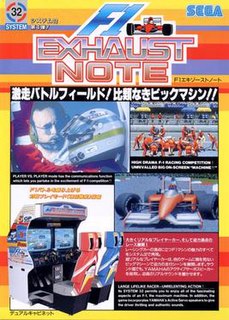 W
WF1 Exhaust Note is a two-player racing game released for arcades in 1991, modeled on Formula One racing. The game has a standard dual racing cabinet setup. Each player station has a 25-inch monitor, steering controls, shift controls, pedals, and a decorative seat. The sound originates from the back of the seat giving the player surround sound effect. The game ran on the Sega System 32 arcade hardware.
 W
WF355 Challenge is a racing simulation arcade video game based on the actual race car and Ferrari event. It was developed by the AM2 division of Sega for the Sega Naomi Multiboard arcade system board under the direction of Yu Suzuki, and was later ported to the Dreamcast and PlayStation 2 home video game consoles under the names F355 Challenge: Passione Rossa and Ferrari F355 Challenge respectively for both American and European releases. The only model of car featured in the game is the Ferrari F355 Challenge model. The game was considered the most accurate simulation of the F355 possible up until that time.
 W
WFighting Vipers is a 3D fighting video game developed by Sega AM2. It uses the same game engine as AM2's Virtua Fighter 2 but features enclosed arenas and an armor mechanic, and was targeted more towards Western audiences, using a U.S. setting and more freeform styles of martial arts. The game was released in the arcade in 1995 using the Sega Model 2 hardware. The game was ported to the Sega Saturn, and to PlayStation Network and Xbox Live Arcade in 2012. Though Fighting Vipers was not very popular in North American arcades, the Saturn version was one of the most high-profile games in the system's 1996 holiday lineup, and was met with positive reviews.
 W
WG-LOC: Air Battle is a 1990 combat flight simulator arcade game developed and published by Sega. It is a spin-off of the company's After Burner series. The title refers to "G-force induced Loss Of Consciousness". The game is known for its use of the R360 motion simulator arcade cabinet. The arcade game was a commercial and critical success upon release.
 W
WGP Rider is a 1990 motorcycle arcade racing game developed and manufactured by Sega, released in Japan, North America and Europe. It was released as two-player arcade cabinets, in the form of a ride-on motion simulator cabinet and a standard upright cabinet. It was ported to the Sega Master System and Game Gear in 1993.
 W
WHang-On is an arcade racing game released by Sega in 1985 and later ported to the Master System. In the game, the player controls a motorcycle against time and other computer-controlled bikes. It was one of the first arcade games to use 16-bit graphics and utilizes the Super Scaler arcade system board, created with design input from Yu Suzuki, as technology to simulate 3D effects. The deluxe cabinet version also introduced a motion-controlled arcade cabinet, where the player's body movement on a large motorbike-shaped cabinet corresponds with the player character's movements on screen.
 W
WOut Run is an arcade driving video game released by Sega in September 1986. It is known for its pioneering hardware and graphics, nonlinear gameplay, a selectable soundtrack with music composed by Hiroshi Kawaguchi, and the hydraulic motion simulator deluxe arcade cabinet. The goal is to avoid traffic and reach one of five destinations.
 W
WPower Drift is a kart racing game released in arcades by Sega in 1988. More technologically advanced than Sega's earlier 2.5D racing games, like Hang-On (1985) and Out Run (1986), in Power Drift the entire world and track consist of sprites. The upgraded hardware of the Sega Y Board allows individual sprites and the background to be rotated–even while being scaled–making the visuals more dynamic.
 W
WPsy-Phi was a cancelled fighting game developed for the Lindbergh arcade platform by new development studio Digital Rex, a development group within Sega, headed by Yu Suzuki formerly head of Sega-AM2. It is the first arcade fighting game to incorporate touch screen controls. Shortly after location testing in 2005, its planned 2006 wide release was cancelled.
 W
WRent A Hero is an action role-playing video game series released by Sega for the Mega Drive console in 1991 with a large emphasis on humor. The game features the same graphic engine previously used in the development of Sword of Vermilion. However, Rent A Hero has an unusual innovation for the genre. Instead of using standard turn-based battles, fights are in a similar format to 2D fighting games.
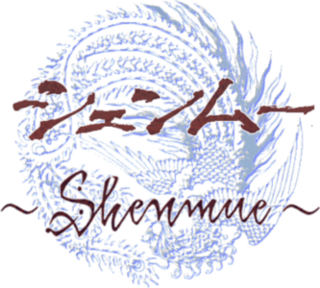 W
WShenmue is an action-adventure game series created, produced and directed by Yu Suzuki. Shenmue (1999) and Shenmue II (2001) were developed by Sega AM2 and published by Sega for Dreamcast. Shenmue III, developed by Suzuki's company Ys Net, was released for PlayStation 4 and Windows in 2019.
 W
WShenmue is a 1999 action-adventure game developed and published by Sega for the Dreamcast. It follows martial artist Ryo Hazuki as he sets out in revenge for the murder of his father in 1980s Yokosuka, Japan. The player explores an open world, fighting opponents in brawler battles and encountering quick time events. The environmental detail was considered unprecedented, with numerous interactive objects, a day-and-night system, variable weather effects, non-player characters with daily schedules, and various minigames.
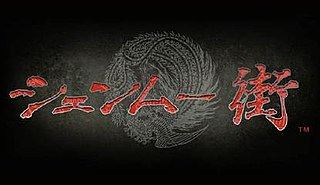 W
WShenmue City is a game in the Shenmue series released for smartphones in Japan. The game was conceived as a way of relaunching the game franchise by series creator Yu Suzuki. It was announced in late 2010 for cell phones and also for PCs, but only a cell phone version was released. The game was discontinued in late 2011.
 W
WShenmue II is a 2001 action-adventure game developed by Sega AM2 and published by Sega for the Dreamcast. It was directed, produced and written by Yu Suzuki. Like the original Shenmue (1999), Shenmue II consists of open-world environments interspersed with brawler battles and quick time events. It features a day-and-night system, variable weather effects, non-player characters with daily schedules, and various minigames. The player controls teenage martial artist Ryo Hazuki as he arrives in Hong Kong in 1987 in pursuit of his father's killer. His journey takes him to Kowloon and the mountains of Guilin, where he meets a girl who is part of his destiny.
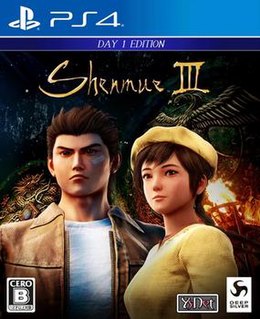 W
WShenmue III is a 2019 action-adventure game developed by Ys Net, published by Deep Silver for Windows and PlayStation 4 and produced by Shibuya Productions. Like the previous Shenmue games, it consists of open-world environments interspersed with brawler battles and quick time events. It features a day-and-night system, variable weather effects, non-player characters with daily schedules, and various minigames. The story continues teenage martial artist Ryo Hazuki's quest to find his father's killer in the mountains of 1980s Guilin, China.
 W
WShenmue Online was an announced MMORPG where players participate in scenarios from Shenmue II, joining one of three clans, led by Shen Hua, Xiu Ying, and Wu Ying Ren, all significant characters from the story.
 W
WSpace Harrier is a third-person arcade rail shooter game developed by Sega and released in 1985. Originally conceived as a realistic military-themed game played in the third-person perspective and featuring a player-controlled fighter jet, technical and memory restrictions resulted in Sega developer Yu Suzuki redesigning it around a jet-propelled human character in a fantasy setting. The arcade game is controlled by an analog flight stick while the deluxe arcade cabinet is a cockpit-style hydraulic motion simulator cabinet that tilts and rolls during play, for which it is referred as a taikan (体感) or "body sensation" arcade game in Japan.
 W
WSpace Harrier II is the sequel to Space Harrier, developed and published by Sega. It was one of the original launch titles released for the Mega Drive in Japan and one of the six Sega Genesis launch titles in the U.S. It was also later released on the Wii's Virtual Console service. Like Altered Beast, another launch title for the Mega Drive, Space Harrier II features digitized human voice recordings during gameplay, and is also an example of some of the Mega Drive's early sound, composed by Tokuhiko Uwabo.
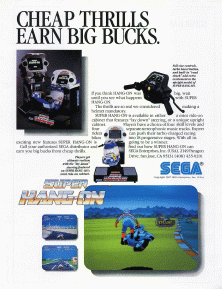 W
WSuper Hang-On is a motorcycle racing arcade game released by Sega, and the sequel to the acclaimed Hang-On. It uses a fully simulated motorcycle arcade cabinet, like the original game. A version of this game, in the full simulated motorcycle cabinet used by the original Hang-On, was released in 1991 as Limited Edition Hang-On.
 W
WTurbo OutRun (ターボアウトラン) is a 1989 arcade racing game released by Sega. A follow-up to 1986's Out Run, it was released as a dedicated game, as well as an upgrade kit for the original Out Run board.
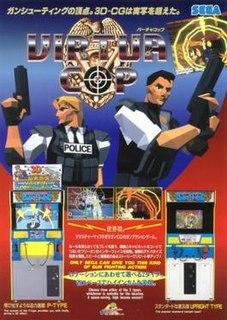 W
WVirtua Cop is a 1994 light gun shooter game developed by Sega AM2 and designed by Yu Suzuki. It was originally an arcade game on the Sega Model 2 system, and was ported to the Sega Saturn in 1995 and Windows in 1996. The Saturn version included support for both the Virtua Gun and Saturn mouse, as well as a new "Training Mode" which consists of a randomly generated shooting gallery.
 W
WVirtua Fighter is a fighting game created for the Sega Model 1 arcade platform by AM2, a development group within Sega, headed by Yu Suzuki. An early prototype version was location tested in Japan by August 1993, before the complete game was released worldwide in October 1993. It is the first game in the Virtua Fighter series, and the first arcade fighting game to feature fully 3D polygon graphics. The game has been ported to several platforms including the Sega Saturn, Sega 32X, and Microsoft Windows.
 W
WVirtua Fighter 2 is a 1994 fighting video game developed by Sega. It is the sequel to 1993's Virtua Fighter and the second game in the Virtua Fighter series. It was created by Sega's Yu Suzuki-headed AM2 and was released for the arcades in 1994. Ports were released for the Sega Saturn in 1995 and Microsoft Windows in 1997.
 W
WVirtua Fighter 3 is the sequel to 1994's Virtua Fighter 2 and the third fighting game in the Virtua Fighter series, developed by Sega AM2 and published by Sega in 1996. It was the first arcade game to run on the Sega Model 3 system board.
 W
WVirtua Fighter 4 is a fighting game by Sega. It is the fourth game in the Virtua Fighter series.
 W
WVirtua Racing, or V.R. for short, is a Formula One racing video game developed by Sega AM2 and released for arcades in 1992. Virtua Racing was initially a proof-of-concept application for exercising a new 3D graphics platform under development, the "Model 1". The results were so encouraging that Virtua Racing was fully developed into a standalone arcade title.
 W
WVirtua Striker is a series of association football sports video games released by Sega for arcades. Originally developed by Sega AM2 from 1994 to 1999, the series moved to Amusement Vision with Virtua Striker 3, but it later moved to Sega Sports Design R&D Dept. with Virtua Striker 4.